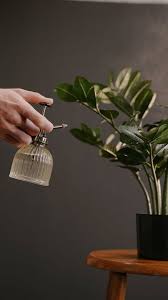Plant Care: A Comprehensive Guide to Healthy Plants
SEO Meta Description: Discover expert tips and techniques for effective Plant Care in this comprehensive guide. Learn how to keep your plants healthy and thriving.
Introduction
Welcome to the world of plant care, where nurturing your green companions can be both rewarding and therapeutic. Whether you’re a seasoned gardener or a newbie with a single potted plant, this article is your ultimate resource for ensuring your plants flourish. In this guide, we will explore the art and science of plant care, covering everything from choosing the right soil to dealing with pesky pests. So, let’s dive into the wonderful world of plant care!
Plant Care: The Basics
Plant care isn’t just about watering your plants; it’s a holistic approach to ensuring their well-being. Here, we will cover the fundamental aspects of plant care.
Soil Selection
Choosing the right soil is paramount for healthy plant growth. Different plants have varying soil preferences. For instance, succulents thrive in well-draining soil, while ferns prefer a more moisture-retentive mix.
Sunlight Requirements
Understanding your plant’s sunlight needs is crucial. Some plants thrive in full sun, while others prefer partial or full shade. Make sure your plants get the right amount of light each day.
Watering Techniques
Overwatering or underwatering can harm your plants. Learn to water your plants judiciously, considering factors like the type of plant, pot size, and humidity levels.
Fertilization
Plants require essential nutrients for growth. Using the right fertilizer at the right time is key to ensuring your plants stay healthy and vibrant.
Pruning and Trimming
Regular pruning and trimming help your plants maintain their shape and vitality. Remove dead or diseased foliage to encourage new growth.
Pest Control
Dealing with pests can be a challenge. Identify common plant pests like aphids and spider mites and take steps to keep them at bay.
Repotting
As your plants grow, they may outgrow their pots. Learn when and how to repot your plants to provide them with ample space for root development.
LSI Keywords: Enhancing Plant Care
Mulching: Protecting Your Plants
Mulching is a fantastic way to conserve moisture, regulate soil temperature, and prevent weed growth around your plants.
Hydroponics: Innovative Plant Care
Explore the world of hydroponics, a soil-less growing method that allows you to cultivate plants in nutrient-rich water.
Companion Planting: Natural Pest Control
Discover the benefits of companion planting, where you strategically plant different species together to deter pests and boost growth.
Container Gardening: Greening Small Spaces
Learn the art of container gardening, perfect for urban dwellers with limited space.
Organic Fertilizers: Earth-Friendly Nutrients
Switch to organic fertilizers for a sustainable and environmentally friendly approach to plant care.
FAQs
How often should I water my plants? Watering frequency varies depending on the type of plant and environmental conditions. Check the soil’s moisture level before watering, and aim for consistency rather than a fixed schedule.
What is the best way to repot a plant? When repotting, choose a pot that is one size larger than the current one. Gently remove the plant from its old pot, loosen the roots, and place it in the new pot with fresh soil.
Can I use homemade remedies for pest control? Yes, many homemade remedies like neem oil and garlic spray can effectively control pests without resorting to chemical pesticides.
Is it essential to fertilize my plants regularly? Yes, regular fertilization ensures that your plants receive essential nutrients. However, it’s crucial to follow the recommended dosage to avoid over-fertilization.
What is the best way to identify plant diseases? Keep a close eye on your plants for any signs of discoloration, wilting, or unusual growth. Online plant communities and gardening books can be valuable resources for diagnosing plant diseases.
How can I make my indoor plants thrive in low-light conditions? Opt for low-light-tolerant plant varieties like snake plants or pothos, and place them near windows to maximize available light.
Conclusion
Congratulations! You’ve just completed your crash course in plant care. By understanding the essentials of soil, sunlight, water, and nurturing techniques, you’re well-equipped to embark on a successful plant care journey. Remember, each plant has its unique requirements, so keep experimenting and learning along the way. Happy gardening!



